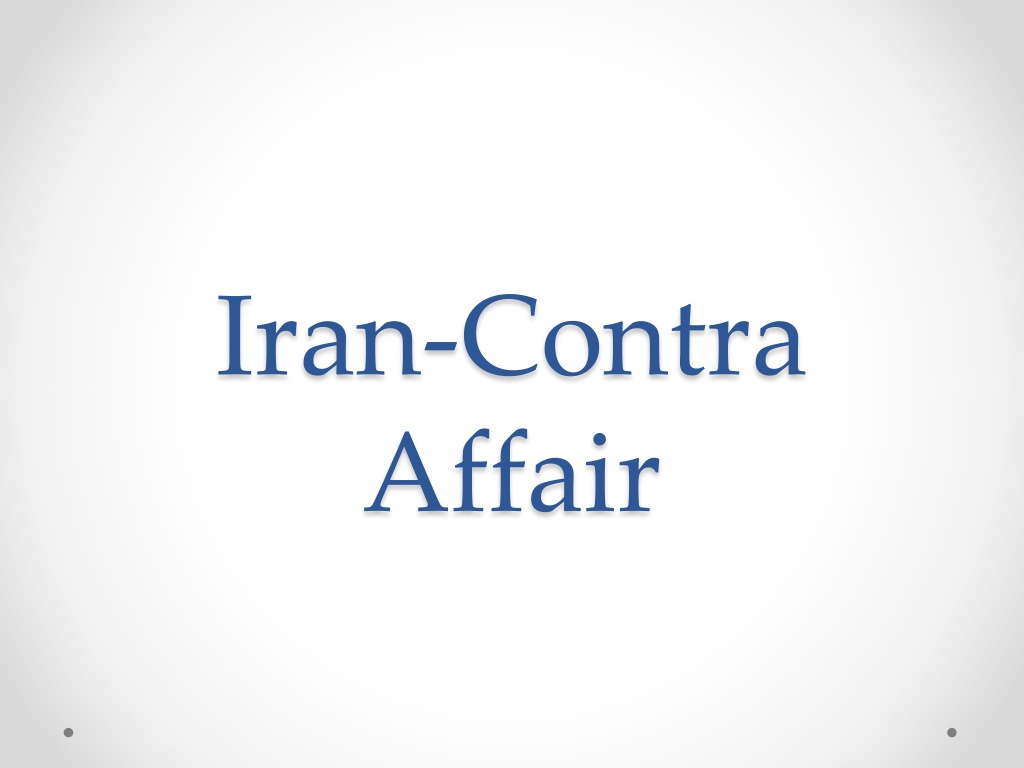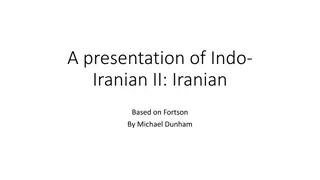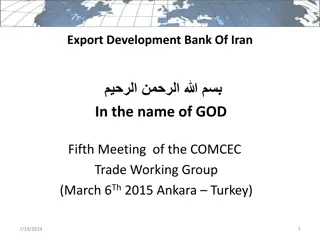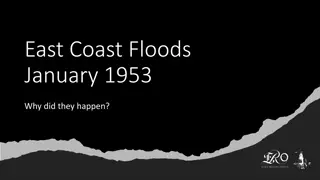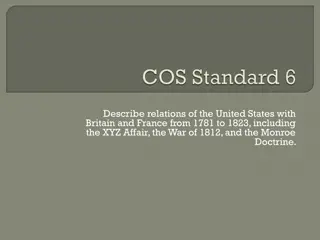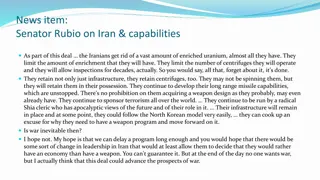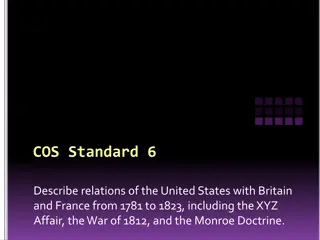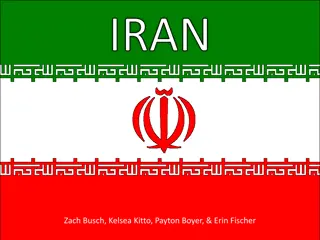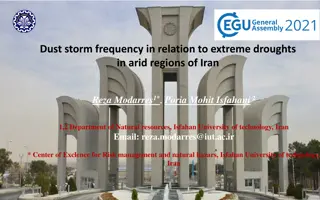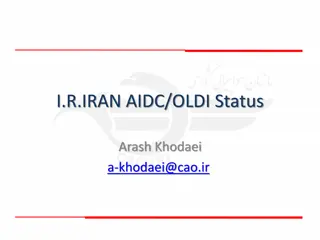The Iran-Contra Affair and the 1953 Iranian Coup d'État
The Iran-Contra Affair involved illicit dealings by the U.S. to fund Nicaraguan rebels, juxtaposed with the 1953 coup in Iran where the CIA orchestrated the removal of Prime Minister Mossadegh. This led to the reinstatement of the Shah and significant control of Iran's oil by American companies.
Download Presentation

Please find below an Image/Link to download the presentation.
The content on the website is provided AS IS for your information and personal use only. It may not be sold, licensed, or shared on other websites without obtaining consent from the author. Download presentation by click this link. If you encounter any issues during the download, it is possible that the publisher has removed the file from their server.
E N D
Presentation Transcript
Iran-Contra Affair
British and American corporations had controlled the bulk of Iran s petroleum reserves almost since their discovery a profitable arrangement that they did not want to change. 1951 Iran s newly elected Prime Minister, a European- educated nationalist named Muhammad Mossadegh, announced a plan to nationalize the country s oil industry. This means the oil will belong to the Iran and not the private companies of the U.S. or Britain.
1. What is happening in the image? 2. What do you see that makes you say that? 3. What else is happening? 4. What more can we find?
1. What is happening in the image? 2. What do you see that makes you say that? 3. What else is happening? 4. What more can we find?
1953 Iranian coup d'tat coup d' tat : a sudden, violent, and illegal seizure of power from a government Beginning in January 1953, the U.S. and Britain agreed to work together toward Mosaddegh s removal. The plot is known as Operation Ajax
1. What is happening in the image? 2. What do you see that makes you say that? 3. What else is happening? 4. What more can we find?
The C.I.A. fostered a coup and in 1953, it was a success. In fact, it served as a model for other covert operations during the Cold War The Shah quickly returned to take power and, as thanks for the American help, signed over 40 percent of Iran s oil fields to U.S. companies! Shah Mohammad Reza Pahlavi
Mossadegh under house arrest in Ahmadabad https://upload.wikimedia.org/wikipedia/commons/thumb/a/a1/Mohammad_Mosaddeq%2C_Ahmadabad_1965.jpg/170px-Mohammad_Mosaddeq%2C_Ahmadabad_1965.jpg On December 21, 1953, he was sentenced to three years' solitary confinement in a military prison.
Absolute Monarch The Shah used the revenues from the agreement between Iran and Western oil companies to solidify his authority. Though he maintained the appearance of a constitutional monarchy, he ruled with a hard fist, using his secret police and suppressing all forms of opposition.
He crowned himself monarch of Iran in 1967 in a lavish ceremony Rise and Fall of the Shah of Iran exile and supreme power, Mohammad Reza Pahlavi iranian revolution Ayatollah Ruhollah Khomeini
Iran Revolution 1979 By the 1970s, many Iranians were fed up with the Shah s government. In July 1979, the revolutionaries forced the Shah to disband his government and flee to Egypt. The Ayatollah installed a militant Islamic government in its place. In October 1979, President Carter agreed to allow the exiled leader to enter the U.S. for treatment of an advanced malignant lymphoma.
On November 4, 1979, a group of Iranian students stormed the U.S. Embassy in Tehran taking more than 60 American hostages.
Embargo placed on Iran 1979 As a result: The United States imposed restrictions on Iran under various legal authorities following the seizure of the U.S. Embassy in Tehran, the capital of Iran. United States imposed economic sanctions against Iran. (embargo)
Hostages release The constant media coverage of the hostage crisis in the U.S. served as a demoralizing backdrop for the 1980 presidential race. President Carter s inability to resolve the problem made him look like a weak and ineffectual leader. At the same time, his intense focus on bringing the hostages home kept him away from the campaign trail. Hostages were releases after 444 days just prior to Ronald Reagans inauguration in 1981.
In the early 1970s, tension along the Israel- Lebanon border increased especially after the relocation of armed Palestinian elements to Lebanon.
Palestine Liberation Organization (PLO) wanted their land back from Israel. PLO leadership took refuge in Lebanon.
PLO attacks Israel On March 11, 1978, an attack in Israel resulted in many dead and wounded; the Palestine Liberation Organization (PLO) claimed responsibility for that raid. Leader of the Palestine Liberation Organization Yasser Arafat
Israel invades Lebanon In response, Israeli forces invaded Lebanon on the nights of March 14 & 15, 1978, and in a few days occupied the entire southern part of the country.
96 hostages taking by Lebanese Government Those taking responsibility for the kidnapping used different names, but the testimony of former hostages indicates that almost all the kidnappings were done by a single group of about a dozen men coming from various clans within the Hezbollah organization Hezbollah is the Shi'a Islamist militant group and political party based in Lebanon
Iran and Lebanon Mutual nations Since the Hezbollah party was founded in the early 1980s, Hezbollah has received financial, military, and political support from Iran.
Iran-Iraq War On Sept. 22, 1980, Iraqi armed forces invaded western Iran along the countries joint border. The roots of the war lay in a number of territorial and political disputes between Iraq and Iran. Iraq wanted to seize control of the rich oil- producing Iranian border region.
Sandinistas Sandinistas were members of a left-wing (communist leaning) Nicaraguan political party. The Sandinista National Liberation Front overthrew President Anastasio Somoza Debayle in 1979, ending 46 years of dictatorship by the Somoza family. Street sign in Managua in 1983: Death to Yankee Imperialism!
Document Analysis Poster 1. Your group will make a poster summarizing an assigned document. 2. Be prepared to explain your poster to the class. 12 groups
Poster Document Analysis Poster should consist of; Title Key details of the document Good grammar and spelling HIPP Analysis o H-Historical context of document (What s happened or happening?) o I Intended Audience (Who was this document mean for?) o P- Point of View (Whose side is portrayed?) o P- Purpose (What is the purpose of this document?)
Connections Between the Documents 1. Each group will present their posters to the class in chronological order. In other words, you will tape up your poster so everyone can see it and explain how your document adds to the story. 2. While each group is taking their turn, you should be taking notes and making a small timeline on your Timeline Project worksheet.
Assessment Your essay will make an analysis of the Iran-Contra Affair timeline. Be sure to include how the documents connect to show the big picture of the Iran-Contra Affair. Your essay should include whether you think President Regan knew what was happening? What is your evidence? Your essay should include your opinions on taking hostages, terrorism, and buying weapons. Look at the Scoring Guide so you see how the points will be assigned.
